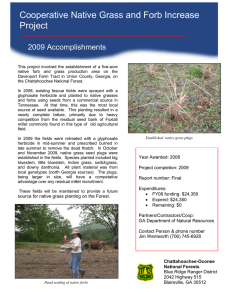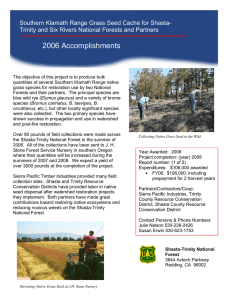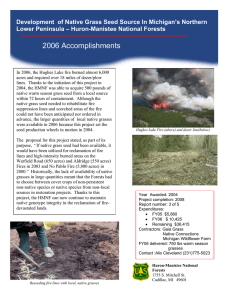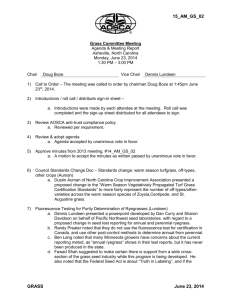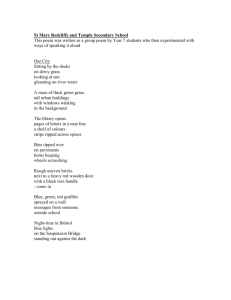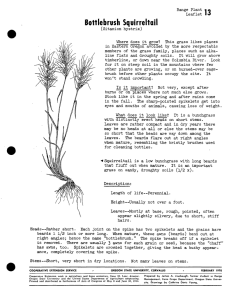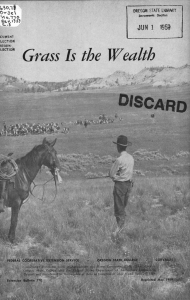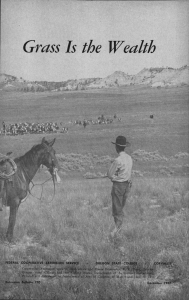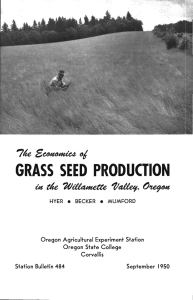RED THREEAWN
advertisement
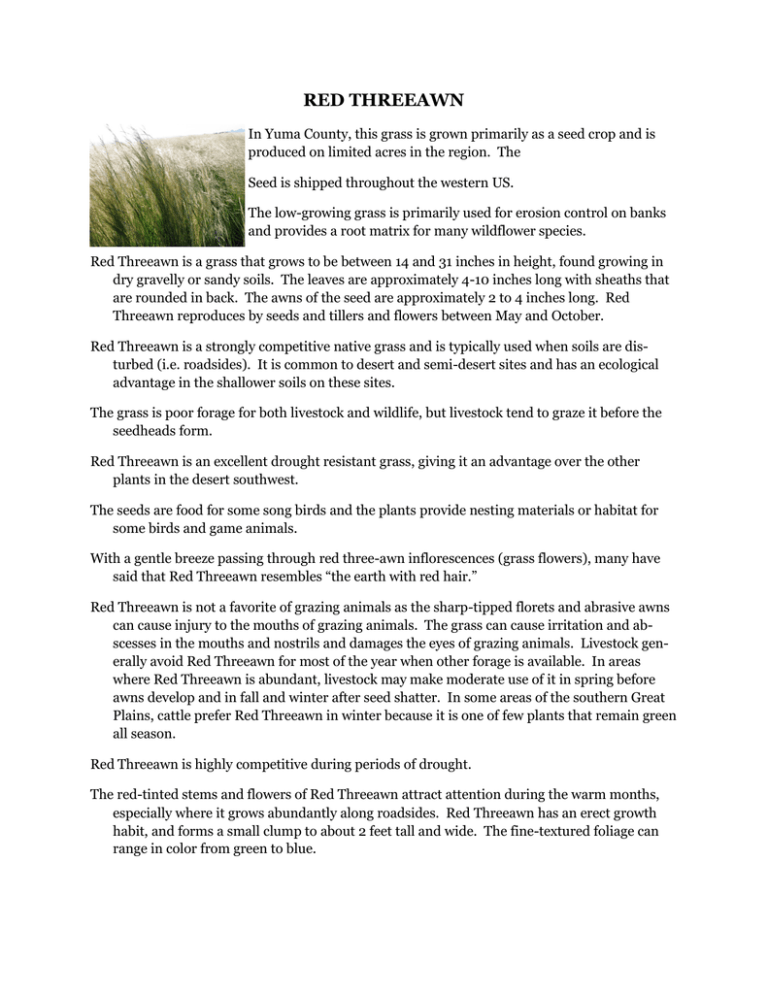
RED THREEAWN In Yuma County, this grass is grown primarily as a seed crop and is produced on limited acres in the region. The Seed is shipped throughout the western US. The low-growing grass is primarily used for erosion control on banks and provides a root matrix for many wildflower species. Red Threeawn is a grass that grows to be between 14 and 31 inches in height, found growing in dry gravelly or sandy soils. The leaves are approximately 4-10 inches long with sheaths that are rounded in back. The awns of the seed are approximately 2 to 4 inches long. Red Threeawn reproduces by seeds and tillers and flowers between May and October. Red Threeawn is a strongly competitive native grass and is typically used when soils are disturbed (i.e. roadsides). It is common to desert and semi-desert sites and has an ecological advantage in the shallower soils on these sites. The grass is poor forage for both livestock and wildlife, but livestock tend to graze it before the seedheads form. Red Threeawn is an excellent drought resistant grass, giving it an advantage over the other plants in the desert southwest. The seeds are food for some song birds and the plants provide nesting materials or habitat for some birds and game animals. With a gentle breeze passing through red three-awn inflorescences (grass flowers), many have said that Red Threeawn resembles “the earth with red hair.” Red Threeawn is not a favorite of grazing animals as the sharp-tipped florets and abrasive awns can cause injury to the mouths of grazing animals. The grass can cause irritation and abscesses in the mouths and nostrils and damages the eyes of grazing animals. Livestock generally avoid Red Threeawn for most of the year when other forage is available. In areas where Red Threeawn is abundant, livestock may make moderate use of it in spring before awns develop and in fall and winter after seed shatter. In some areas of the southern Great Plains, cattle prefer Red Threeawn in winter because it is one of few plants that remain green all season. Red Threeawn is highly competitive during periods of drought. The red-tinted stems and flowers of Red Threeawn attract attention during the warm months, especially where it grows abundantly along roadsides. Red Threeawn has an erect growth habit, and forms a small clump to about 2 feet tall and wide. The fine-textured foliage can range in color from green to blue. In the fall, the three long awns attached to each seed glow in the sunlight. It can either be scattered among native shrubs and perennials, or planted in masses for maximum impact. Red Threeawn has a wide distribution, growing at elevations from 1000 to 5000 feet in Arizona, Utah, Texas, New Mexico, and into the plains and northern Mexico. It thrives in sunny, dry locations, with minimal irrigation. Xeriscaping is a method of planting which promotes naturally drought tolerant plants and water saving methods. Much consideration is given not only to the plants chosen for the design, but the design itself. There is a strong emphasis on using native plants, like Red Threeawn, which will do well in Xeriscaping. Kurt Nolte is an area agriculture agent with the Yuma County Cooperative Extension. He can be reached at 928-726-3904.
